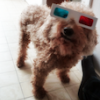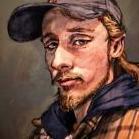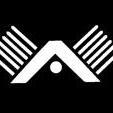Leaderboard
Popular Content
Showing content with the highest reputation on 2015-11-06 in all areas
-
At the moment we are limited on the CPU side by the number of objects and not the polygon count of these objects. At least that's true for dedicated graphics cards. In my OpenGL 4 branch, I'm working on reducing driver overhead with OpenGL 4 functionality such as glMultiDrawElementsIndirect. So far, I've only worked on the aspect of uniforms and don't even do real instancing yet. Still, this has already improved performance quite a bit. I hope and expect to see some more improvements by introducing bindless texture management, which should then allow real instancing. In my opinion, it doesn't make much sense to work on a LOD system, before we overcome these limitations.3 points
-
No that's something else stan. Nikagra you may want to get in touch with Yves who is currently rewriting the renderer to use OpenGL 4+, if you run into such issues. As far as understanding our current code goes, I think Yves, Philip (on IRC) and myself would be the most knowledeable. Thanks for your interest!2 points
-
Position: Programmer (Graphics, Gameplay, AI) Do you understand that Wildfire Games is a non-commercial project, work for 0 A.D. is volunteer, and work is done for free? Yes Do you agree to distribute all your work for Wildfire Games under Creative Commons Attribution Share-Alike license? Yes Name: Mikita Hradovich Email: nikagra (at) gmail (dot) com Location: Wrocław, Poland Availability: ~10h (it depends really) Age: 26 Occupation: Software Developer (Gigaset), Doctoral Study (Wrocław university of Technology) Bachelor Thesis on 3d landscape generation and some procedural techniques Skills and Experience: 4+ years of commercial programming experience, strong and deep interest in game development Motivation: I'm passionate gamer and my long-term goal is to become a game developer Personality: I'd like to challenge myself and constantly learn new things Short Essay: I've learned about 0 a.d. when it appeared on indiegogo. A few days ago I've got an email from Wildfire Games and decided to finally try to take active role in 0 a.d. development. This is a great opportunity to get gamedevelopment experience, to learn more about game engine architecture, to participate in real game and to meet passionate gamers and developers like me Interests and Hobbies: Computer science and programming, gaming and gamedev, sci fi (books, movies), astronomy Staff: No Community: Reddit Favorite Game: Witcher 3, Skyrim, Crusader Kings 2, Age of Empires 2, Cossacs, Assassin's Creed series, list goes on... Work Examples: C++ developer in Nokia Networks (2 years)1 point
-
ah lion, I just appreciate the buildings more for knowing how it's done now! I havent had an opportunity to use the siege towers yet, but I know they don't shoot arrows, they just unload a space ahead of where they are. The cavalry javelinist looks to me like it's potentially just as overpowered as our own was (cavalry archer that costs no gold) lol I bought it within the hour of it coming out, the african biomes are amazing too, cutting down baobab trees actually has a sprite progression as you take more wood out of it instead of the single fallen tree that disappears when its out of wood. I cannot stress enough how pleased I am with the architectural progression though1 point
-
We do actually somewhat need gldrawinstanced to improve on what we have now. Also we have very little texture atlasing, in particular for stuffs such as bushes. In general I think the engine should be able to do better on instancing by being clever about things, not by raw openGL techniques. LOD would be useful in some edge cases, such as when the camera is rotated to look super low. In particular, the cinematic camera could really use it. I think it would be a more useful feature to have higher-res meshes that rarely get used, more than lower-res meshes though. I think a bigger improvement would be to cull objects that are too small at a distance, but that would take some fine tuning.1 point
-
The whole architecture set is gorgeous, and the new campaign has voice acting again!1 point
-
What you could do, is make a proper design document ie updating a word document. Like the current ones in the wiki. With the shield variants and all1 point
-
We could replace your idea if the Iranian with the Mysian heavy archer. You had an article that they were dressed in the Macedonian style, and being from that part of Asia Minor means that they would have a large greek influence, possibly leading to heavier armour. You could either just use them to replace say, the Syrian archer in the proposed new roster. The Mysian archers would be slower, and less damage dealing than the Cretans, but would have more armour, letting the player make a tactical decision, without overbalancing the faction1 point
-
References & Concept Art The first task is to find pictures of existing African buildings, we gathered hundreds of pictures of Northern African architecture. However, here we met our first challenge: were not making a set just for the Malians, were having them share their set with another African civ. So we had to make a generic African set, which is not something that exists. Time for concept art! We started with the market as our first building. The reason for this was two-folded. First of all, the market is a building that changes in all ages, so we can use its style and texture as a base for the rest of the buildings. Secondly, its a big building with a lot of variety, which helps us define that proper style. Basic Blocks Time to turn this pencil & paper artwork into digital models. We jumped into our modelling software and came up with the following models: However, we made a big mistake, which we didnt notice right away. All buildings in Age of Empires II have their characteristic shapes and sizes. Although the market was roughly following the proportions of the existing markets, it wasnt close enough, and it felt like the buildings stood out too much. Back to the drawing boards, where we analyzed the existing sets to turn all buildings into basic blocks. Playing with LEGO as it were. Source:http://www.forgottenempires.net/age-of-empires-ii-hd-dev-blog-4-african-architecture Rendering & post-processing Now, what was the reason we got the market to fit in with the other buildings in the end? Once again, two important reasons. The first one is because of the way Ensemble Studios created their buildings. In the 90s, 3D modelling wasnt as evolved as it is today. Each and every object was created individually, down to every brick in a wall. Which is exactly what we did. The straws in the thatch roofs on the Feudal market are all modeled individually. Which you can also see in this detail of the Imperial market ####### This part isn't important to us. But I included as extra info , or a curiosity. #### Age of Empires II HD Dev Blog #4 African Architecture by Cysion | Aug 28, 2015 | Age of Empires II, Dev Blog, News | 137 Comments New civilizations also mean new buildings! And we were presented with a big plate of fresh challenges. Looking back at the new architecture sets introduced in Age of Empires II HD: The Forgotten, we knew we had to step up our game. The Italian set was masterfully photoshopped from the Middle Eastern set (with some exceptions) but we wanted to go the extra mile for the African set. Time to brush off our 3D modelling software! References & Concept Art The first task is to find pictures of existing African buildings, we gathered hundreds of pictures of Northern African architecture. However, here we met our first challenge: were not making a set just for the Malians, were having them share their set with another African civ. So we had to make a generic African set, which is not something that exists. Time for concept art! We started with the market as our first building. The reason for this was two-folded. First of all, the market is a building that changes in all ages, so we can use its style and texture as a base for the rest of the buildings. Secondly, its a big building with a lot of variety, which helps us define that proper style. aoe2_african_concept_art_market Basic Blocks Time to turn this pencil & paper artwork into digital models. We jumped into our modelling software and came up with the following models: aoe2_african_first_models_market However, we made a big mistake, which we didnt notice right away. All buildings in Age of Empires II have their characteristic shapes and sizes. Although the market was roughly following the proportions of the existing markets, it wasnt close enough, and it felt like the buildings stood out too much. Back to the drawing boards, where we analyzed the existing sets to turn all buildings into basic blocks. Playing with LEGO as it were. aoe2_african_lego_blocks_market Now we had the basic shapes, we could start modelling again. This time we focused hard on the Feudal Age set. A lot of improvements were made as you can see on the images below. Feudal Market V1 shows the market prior to our block-building analysis and V2 shows the revamped version with proper AoE2 proportions. SvHDV5q However, we werent happy yet. The shape was right, but the building looked a lot more simple than the buildings currently in the game. This was due to two reasons: firstly, African feudal architecture was mainly mud-based, which has functionality over aesthetics, but secondly is because we made it look simple. Its not because its simple, that we cant make it look more special, time to step up our game! So we began experimenting, which eventually led to all the images below. First we tried with some more complicated textures. Then we started to change the shape of the building, which eventually led to V3, which we nicknamed Flintstone-melted potato with a tennis sweatband-style. Needless to say, we ditched that one in the end. aoe2_african_potato_melted_flintstone_market Many iterations later, we ended up with the final Feudal Market, which is the one you will see in the game. aoe2_african_final_model_feudal_market Rendering & post-processing Now, what was the reason we got the market to fit in with the other buildings in the end? Once again, two important reasons. The first one is because of the way Ensemble Studios created their buildings. In the 90s, 3D modelling wasnt as evolved as it is today. Each and every object was created individually, down to every brick in a wall. Which is exactly what we did. The straws in the thatch roofs on the Feudal market are all modeled individually. Which you can also see in this detail of the Imperial market. aoe2_african_imp_market_stages Now comes the most difficult part: weve seen the models in high-quality 32-bit renders this whole time. But for Age of Empires II, they need to be converted to 8-bit images, which means from 24 million colors to just 256! Luckily we can use Photoshop to help us in that conversion so that not too many color-ranges get lost, but its still a shocking difference to see sometimes. Last but not least, we add eye candy! The last step in post-processing to make the buildings fit with the rest of the game. We copy some barrels, items and little plants that can be found on other buildings and paste them on our new models. Its been a month-long journey, and at the time of writing, were not at the end yet, but I would already like to thank our lead artist Jorgito, for all the hard work he has done and still maintaining his sanity over it1 point





.thumb.png.ce58cea22940c255f5b0a735d5abee36.png)